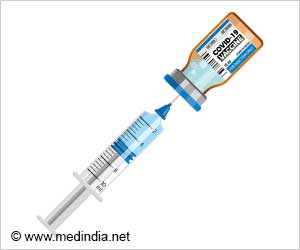Identification of the role of protein in bacteria causing gonorrhea and understanding the mechanism of resistance could help develop a new vaccine for gonorrhea

TOP INSIGHT
Identification of a new vaccine can protect people from the sexually transmitted disease like gonorrhea.
Read More..
It can lead to endometritis, pelvic inflammatory disease, ectopic pregnancy, epididymitis and infertility.
Babies born to infected mothers are at increased risk of blindness. Up to 50 percent of infected women don't show any symptoms, but those asymptomatic cases can still lead to severe consequences for the patient's reproductive health, miscarriage or premature delivery.
Aleksandra Sikora, a researcher with the OSU College of Pharmacy and OHSU's Vaccine and Gene Therapy Institute, helped lead an international collaboration that performed proteomic profiling on 15 gonococcal strains; proteome refers to all of the proteins any given organism produces.
Among the isolates in the study were the reference strains maintained by the World Health Organization that show all known profiles of gonococcal antimicrobial resistance.
A vaccine works by introducing an "invader" protein known as an antigen that triggers the body's immune system and subsequently helps it quickly recognize and attack the organism that produced the antigen.
In addition, scientists looked at the connection between bacterial phenotype - the microbes' observable characteristics and behavior - and the resistance signatures that studying the proteins revealed; they found seven matching phenotype clusters between already-known signatures and the ones uncovered by proteomic analysis.
Together, the findings represent a key step toward new weapons in the fight against a relentless and ever-evolving pathogen.
"We created a reference proteomics databank for researchers looking at gonococcal vaccines and also antimicrobial resistance," said Sikora, co-corresponding author on the study. "This was the first such large-scale proteomic survey to identify new vaccine candidates and potential resistance signatures. It's very exciting."
The findings add new momentum to a vaccine quest that also received a boost in summer 2017, when a study in New Zealand showed that patients receiving the outer membrane vesicle meningococcal B vaccine were 30 percent less likely to contract gonorrhea than those who didn't get the vaccine.
"All previous vaccine trials had failed," Sikora said.
Gonorrhea and meningococcal meningitis have different means of transmission and they cause different problems in the body, but their source pathogens are close genetic relatives.
### Working with Sikora on the proteomics study were co-corresponding author Magnus Unemo of Orebro University in Sweden, Fadi El-Rami and Ryszard Zielke of the OSU College of Pharmacy, and Teodora Wi of the World Health Organization.
The WHO, the National Institute of Allergy and Infectious Diseases, and the Foundation for Medical Research at Orebro University Hospital supported this research.
Source-Eurekalert
 MEDINDIA
MEDINDIA

 Email
Email










